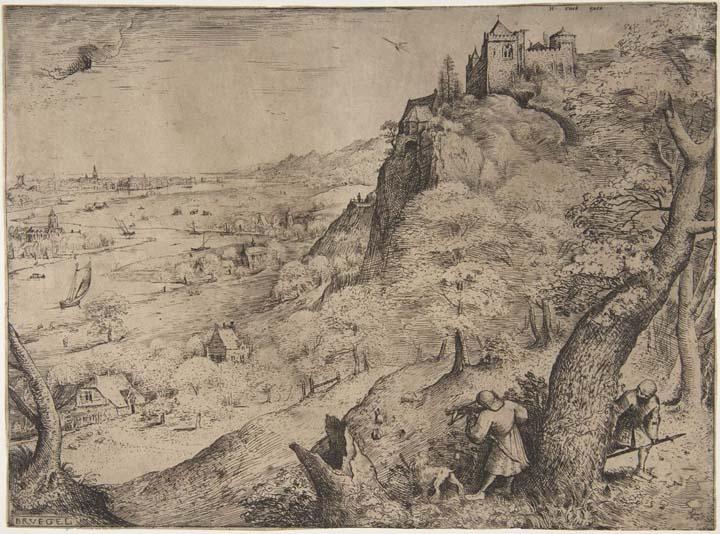Archive Fever: The Met Online
Today, The Metropolitan Museum of Art launches a new public application programming interface [API] for the collection. The Met Collection API. Here, all makers, creators, researchers, and dreamers can now connect to the most up-to-date data and more than 400,000 images of artworks in The Met collection, which represents five thousand years of human history.
From the catalog
page of The Harvesters, 1565, by Pieter Breugel the Elder, you can access related artworks including Breugel’s etching, The Rabbit Hunt, 1560, below.

The Met was one of the first significant cultural institution to partner with Google Arts & Culture when it launched it’s online access program in 2011. Starting with seven artworks from the collection, the museum’s digital department has continued to manually upload more than 200,000 hi-res images of public domain works.
A next step—key to the launch—is to demonstrate the value of making this knowledge and data, all available for use without copyright or restriction Recently, Data Visualization students at The New School's Parsons School of Design experimented with the new data set. Links to individual experiments can be found on The Met's blog.

Integral to The Met’s Open Access Initiative is the commitment to make great art accessible to everyone—and to help people “turn upward from the desk and engage with something transcendent.” Simone Seagle, Web and Educational Software Developer for The Met, has been turning works of art into interactive JavaScript games, and most recently has created interactive animations out of paintings from The Met Collection. Among the piece she has animated are Cat Watching a Spider, ca 1888 by Oide Toko (Japanese, 1841–1905).
About The Met’s Open Access program Simone said, “Sometimes I wonder what the artists would think if they saw what I was doing. I hope they would appreciate it, but I'll never know. And perhaps it doesn't matter—that's the beauty of what The Met has done with Open Access. The art that was just for a few now belongs to all, and those with the will and imagination can play with, modify, and augment these works as they see fit. I come to these pieces with my own background and perspective, but there are millions of different ways to approach them for millions of different purposes. I am excited to see what comes next.”
To begin your search, go to the landing page of The Met’s Open Access, go here. For Info and how-to, go here.
For Info about The Met’s three locations, go to The Met Fifth Avenue, The Met Breuer, and The Met Cloisters.
To explore Google Arts & Culture, go here



